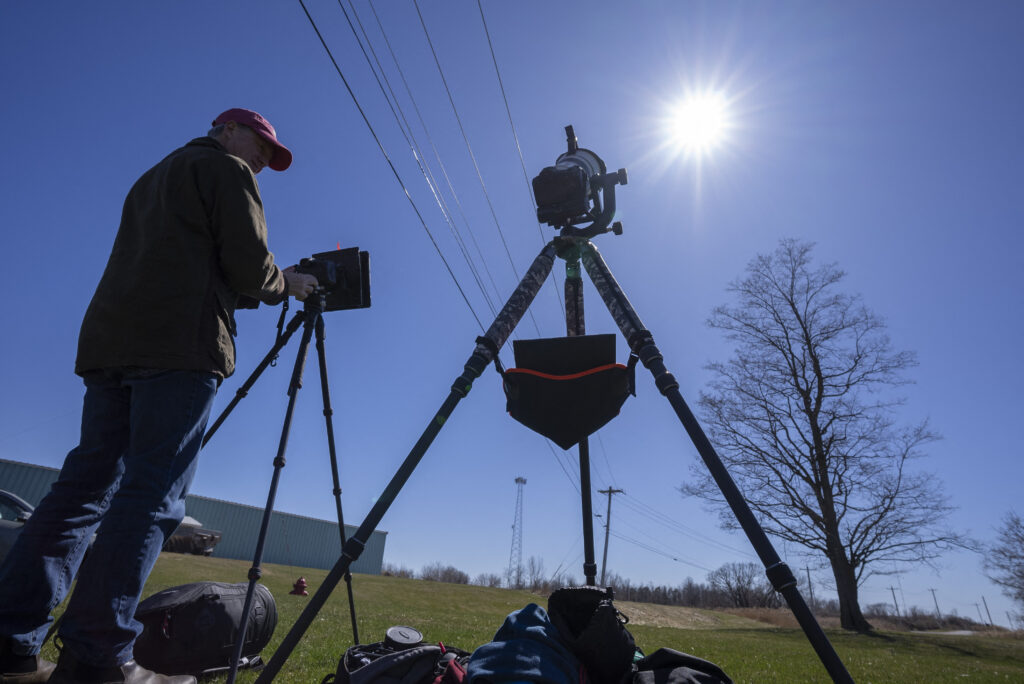
John Bills tests his camera equipment on the eve of a total solar eclipse across North America, in Cape Vincent, New York, on April 7, 2024. | Photo by Stan Honda / AFP
If you’re nowhere near the path of totality or if clouds spoil your view, you can still catch the total solar eclipse online.
Weather permitting, tens of millions who live along a narrow stretch from Mexico’s Pacific coast to eastern Canada can just look skyward Monday, April 8, 2024, to glimpse day turn to twilight when the moon blots out the sun.
Eclipse glasses are a must to prevent eye damage. The only time it’s safe to ditch protective glasses is during totality, or the few minutes of complete darkness.
READ MORE:
Solar eclipse: How to view it without hurting your eyes
Solar eclipse in US: What do scientists hope to learn from it?
Here are some alternatives if you’re clouded out during the eclipse or if you can’t travel to the path:
NASA goes live from different eclipse cities
NASA is offering several hours of streaming online and on NASA TV starting at 1 p.m. EDT from several cities along the totality path. The space agency will show telescope views of the sun and there will be appearances by scientists and space station astronauts. During the eclipse, small rockets will blast off from Wallops Island, Virginia, with science instruments into the electrically charged portion of the atmosphere near the edge of space known as the ionosphere.
AP hosts live show from totality path
Associated Press journalists will fan out along the path of totality to bring live coverage of watch parties and festivities. The AP livestream will start at 10 a.m. EDT with views from Mazatlán, Mexico, and other locations. Commentary will run from 1:30 p.m. to 3:30 p.m. EDT featuring interviews with organizers, scientists and live views from along the path.
Telescopes and experiments focus on the sun
The Exploratorium museum will feature live telescope images of the sun from Junction, Texas, and Torreón, Mexico. Researchers and students from the University of Maine will launch high-altitude balloons in an experiment that will be livestreamed from the stratosphere. Time and Date will show the sun from different telescope feeds. Slooh will broadcast from Texas and will have a network of partner telescopes along the path.
Disclaimer: The comments uploaded on this site do not necessarily represent or reflect the views of management and owner of Cebudailynews. We reserve the right to exclude comments that we deem to be inconsistent with our editorial standards.
